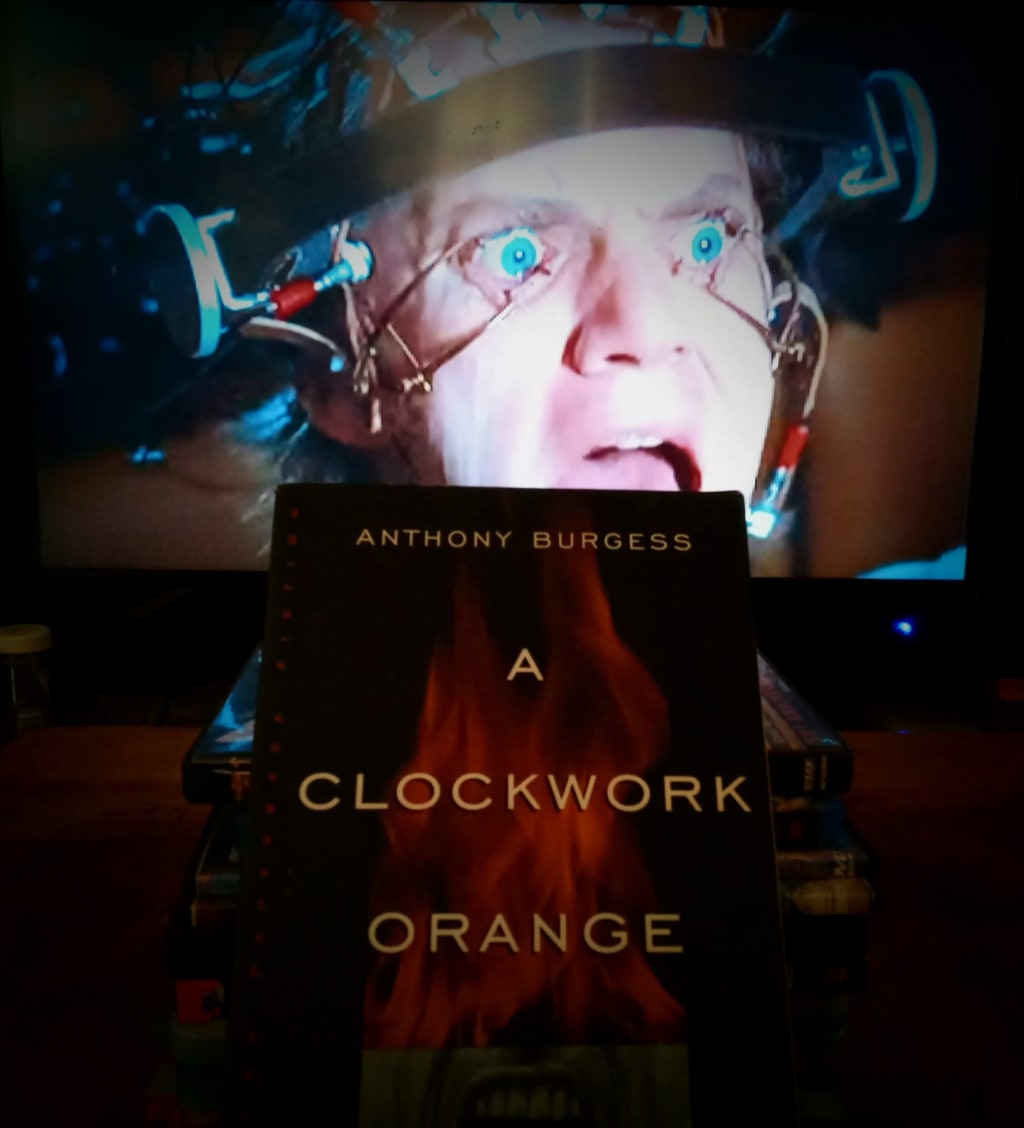Book vs Movie: A Clockwork Orange
Thoughts on how the movie compares to the novel

The first time read A Clockwork Orange was quite a few years ago. I'm not sure where my copy is and don't remember which version it is. This time around I had a library ebook, the complete original version of the novel. Until reading the introduction, I hadn't even realized there were different versions. Apparently, the American publisher decided not to include the final chapter when it was first published. This is the version the film was based on. It seems like a minor difference, but it does change the character arc of the protagonist Alex.
Quick summary for anybody that's not aware. The story follows Alex, a teenager who spends his nights perpetrating violent crimes with his band of "Droogs". When his friends turn on him and a robbery goes wrong, he ends up in jail for murder. In exchange for a reduced sentence, he agrees to an experimental treatment which eliminates his ability to perform acts of violence. Once released he has to learn how to cope with the effects of the treatment and face the consequences of his earlier crimes. The story is written in first person from Alex's point of view including fictional teen slang from a futuristic Britian. This time around reading the book, it felt I bit easier to understand. Most of it is fairly easy to figure out from the context but it is a bit of a challenging read. It's not something I was able to speed through. But I appreciated it forcing me to slow down and really be absorbed into the story.
One of the most notable elements of the movie are the visuals. Kubrik went well beyond what is described in the book, as least from what I could decipher. From the sets to the wardrobe, it went a long way in the worldbuilding for the story. The movie feels very long for a novel that is not very long. The novel isn't even two hundred pages meanwhile the movie is just a little over two hours long. Likely because the story sticks pretty close to the source material. There were only a few minor changes. One notably addition was Alex's long intake process into the jail. None of which is in the book, instead we got a long block of text from Alex about not really being seen as a person in the jail, how they aren't even called by their names but instead their number. The dehumanizing experience of jail is shown rather than described. I've already mentioned the most substantial difference between the original novel and the movie. The novel takes us a little further along in Alex's story, and we get a chance to see more of a character arc. Meanwhile there's not much development for his character in the movie. However, I thought it left the end of his story opened ended. Considering how young he is there's still lots of possibilities for the future. Viewers could make varying assumptions on where Alex may end up.
I like both for different reasons and each has things that I liked less. The slang is a fun bit of worldbuilding and does add to the story experience, but at times can be irritating. And as much as I love the movie, it felt very long, a bit too long. My best recommendation is to go with your instincts on what you might prefer, but if you can and are willing go ahead, read the book and watch the movie. I'd love to hear what you thought.
A version of this was previously published to my blog, Last Words: Book vs Movie, the latest in an ongoing series. Check it out to see all the film adaptations I've compared to their literary counterparts. Or check out bookshop list below, for the full list and a quick summary of which I preferred. (As an affiliate, I get nothing for my opinions but do earn a small commission from resulting sales.)
About the Creator
Alexis M. Collazo
Born and raised in Brooklyn, New York. An avid reader, writer and multimedia creator. Relocated to Pennsylvania where she is currently focused on writing, crafting and leading workshops online. Visit www.alexismcollazo.com for more info.






Comments
There are no comments for this story
Be the first to respond and start the conversation.